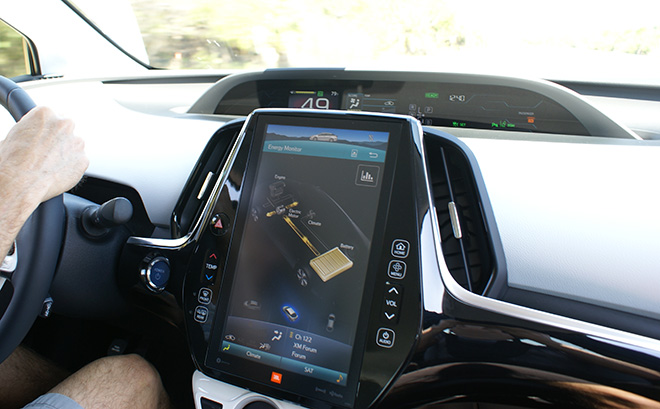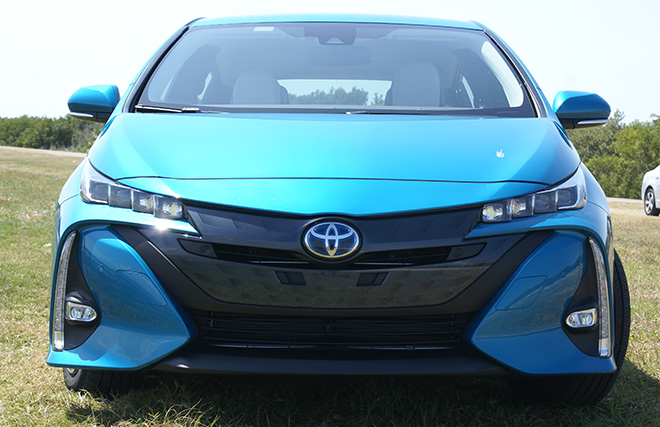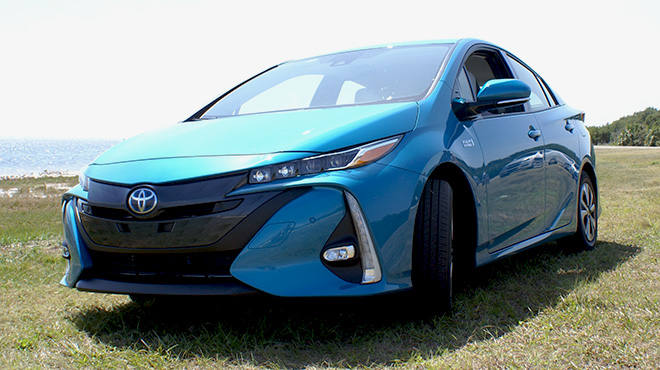The Toyota Prius is one of those cars that you see everywhere – it isn’t exactly an “old classic,” like an aging Corvette or Cadillac, but rather an “old faithful,” like a Honda Civic or a Volvo. Their owners don’t take them to classic car shows, but many of these workhorses have been on the road for over a decade, and are well into the five figures on the odometer.
I own a pair of those, and recently the two reliable old mares got to meet a sassy young filly – the new Prius Prime, which several reviewers are calling “the best Prius ever.” We recently published a feature article on the Prius Prime, complete with technical details and firsthand information from the Toyota team. As we put the Prime through its paces, I couldn’t avoid comparing it with my 2005 and 2006 Prii.
This isn’t a true apples-to-apples comparison – I’ve never driven the Prius Plug-in, nor have I tested any of the new non-plug-in Prius models. Furthermore, I suspect that comparing just about any new vehicle to its ancestor from 11 years ago would show major improvement. But – make no mistake – the Prime truly represents a new era for the Prius, and for electrified vehicles in general, so it’s interesting to take a look at how far we’ve come in a decade.

When it comes to performance, these are two completely different vehicles. The old Prius handles fine both in the city and on the highway, but I’ve never heard anyone call it fun to drive. The transition between gas and electric drives is not always smooth, and when you really punch the pedal there can be a disconcerting delay of a half-second or so.
That’s all history. The Prime has plenty of pickup and butter-smooth handling in both hybrid and electric modes. The practiced ear can tell when it’s running on gas or electrons, but the transition is as seamless as you could wish. In EV mode, you get that wonderful instant torque, so nice for leaping up onramps and baiting Mustang drivers at red lights, and you can even select EV Auto mode to save your charge for later.
In terms of fuel economy, the improvement has been substantial. The 2006 Prius is rated at 46 mpg combined, but I average around 48, even with the AC laboring in the Florida heat. The Prime is rated at 54 mpg, or 133 MPGe in electric mode. Electric range is rated at 25 miles, and I was able to squeeze out a little more than that.

Naturally I love the Prius’s unbeatable mileage, but what seals the deal for me is its surprising cargo-carrying capability. As a working musician, I need to lift large, heavy objects in and out on a daily basis, and this is not just a matter of cubic feet. The good old Prius has a deck that’s low to the ground and almost completely flat, without the annoying little lip at the back that so many other cars have. It’s perfect for hauling gear.
In this department, the Prime unfortunately takes a step backward. This is the Achilles heel of all plug-in vehicles, unless they are designed “native style,” with a flat battery pack at the bottom, like Tesla’s vehicles and the BMW i3. The Prime’s larger battery had to go somewhere, and that somewhere is of course the cargo area. Compared to the standard Prius, cargo capacity has been reduced from 24.6 to 19.8 cubic feet. That’s not a deal-killing difference – there’s still enough room for a modern musician’s rig. However, Toyota not only reduced the capacity, it also reduced the usability of the cargo compartment by giving it an uneven, unsturdy floor.
Unlike the classic Prius, the Prime’s cargo floor is far from flat – it ramps up at the back, and back down at the front, just behind the seats. Even with the seats down, you don’t have a flat surface, so loading large objects is awkward. Furthermore, the piece that covers the battery seems to be made of flimsy pressboard, with a thin nap covering. It’s a far cry from the solid, ruggedly carpeted floor that one finds in the classic Prius (and most every other hatchback, wagon or SUV). It seems like an afterthought, and definitely doesn’t look like something that’s going to stand up to years of heaving amplifiers in and out.
Mind you, this is a musician’s gripe, a minor issue for most car buyers. You’ll have no problem at all carrying a gang of grocery bags or a stack of sports equipment.

When it comes to techno bells and whistles, the new Prius is up to the minute. The loaded version we tested had a huge screen to control the nav, climate and audio, a heads-up display, and even a wireless phone charging pad.
So, how much of a premium will you pay for the joys of plugging in? Well, believe it or not, you might just pay less, not more. The Prius Prime’s MSRP starts at $27,100, and it is eligible for a $4,500 federal tax credit, as well as an additional rebate in some states ($1,500 in California). The plugless Prius starts at $24,685. So, if you can take advantage of the tax credit, you might pay around $2,000 less to Prime your Prius, in addition to the money you’re going to save on gas.



















































